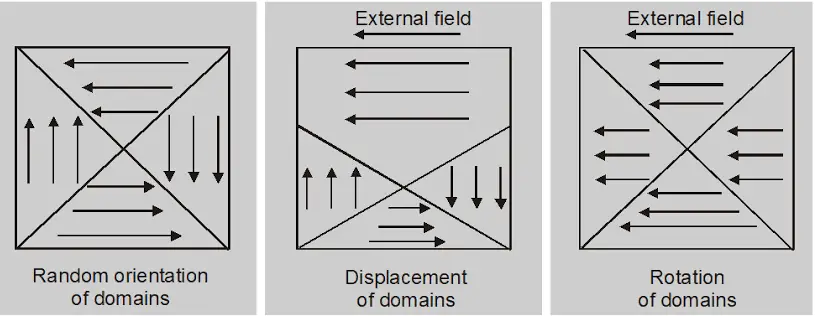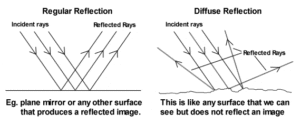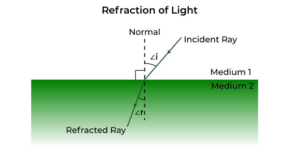In this article, we are going to discuss the origin of ferromagnetism class 12, so let’s get started…
Origin of ferromagnetism: domain theory
Weiss explained ferromagnetism on the basis of his domain theory. In materials like Fe, Ni, Co, the individual atoms are associated with large magnetic moments. [latexpage]
The magnetic moment of neighbouring atoms interact with each other and align themselves spontaneously in a common direction over a macroscopic region called domains. Each domain has a typical size of about 0.1 to 1 mm and contains about $10^{11}$ atoms. So each atom possesses strong magnetic moments.
In the absence of an external magnetic field, these domains are randomly distributed so that the net magnetic moment is zero.

When a ferromagnetic material is placed in an external magnetic field, all the domains align themselves along the direction of the field leading to the strong magnetization of the material along the direction of the field. That is why the ferromagnetic materials are strongly attracted to the magnets.
The alignment of the magnetic domains may occur in either of the following two ways.
1). Origin of ferromagnetism class 12: Domain theory
When the external field $B_0$ is weak, then the domains align in the direction of $B_0$ grow in size while those oppositely directed decrease in size, see figure below.

2). By the rotation of domains
When the external magnetic field $B_0$ is strong, then the domains rotate till their magnetic moment is aligned in the direction of the field $B_0$, see figure above.
Suggested Reading:
- Origin of paramagnetism class 12
- Origin of diamagnetism class 12
- Classification of magnetic material with examples class 12
Modified Curie’s Law for ferromagnetic materials
When the ferromagnetic materials are heated, then their magnetization starts decreasing due to the randomization of the magnetic domains. At a sufficiently high temperature, the structure of the domains disintegrates and ferromagnetic materials become paramagnetic materials.
The temperature at which ferromagnetic materials become paramagnetic is called Curie temperature or Curie point $T_C$.
Above Curie’s point i.e the paramagnetic phase, the magnetic susceptibility varies with temperature as below.
$$\chi_m=\frac{C’}{T-T_C}\qquad [T>T_C]$$
Where $C’$ is a constant. This is the modified form of Curie’s Law for ferromagnetic materials. Above Curie’s temperature, this law is called Curie-Weiss Law. This law can be stated as follows.
Curie-weiss Law is stated that the susceptibility of the ferromagnetic materials above the Curie’s temperature is inversely proportional to the excess of temperature above Curie’s temperature.
Curie temperatures of some ferromagnetic materials are given in the below table.
| Materials | $T_C$ (K) |
| Cobalt | 1394 |
| Gadolinium | 317 |
| Iron | 1043 |
| Nickel | 631 |
| Fe2O3 | 893 |
Stay tuned with Laws Of Nature for more useful and interesting content.








